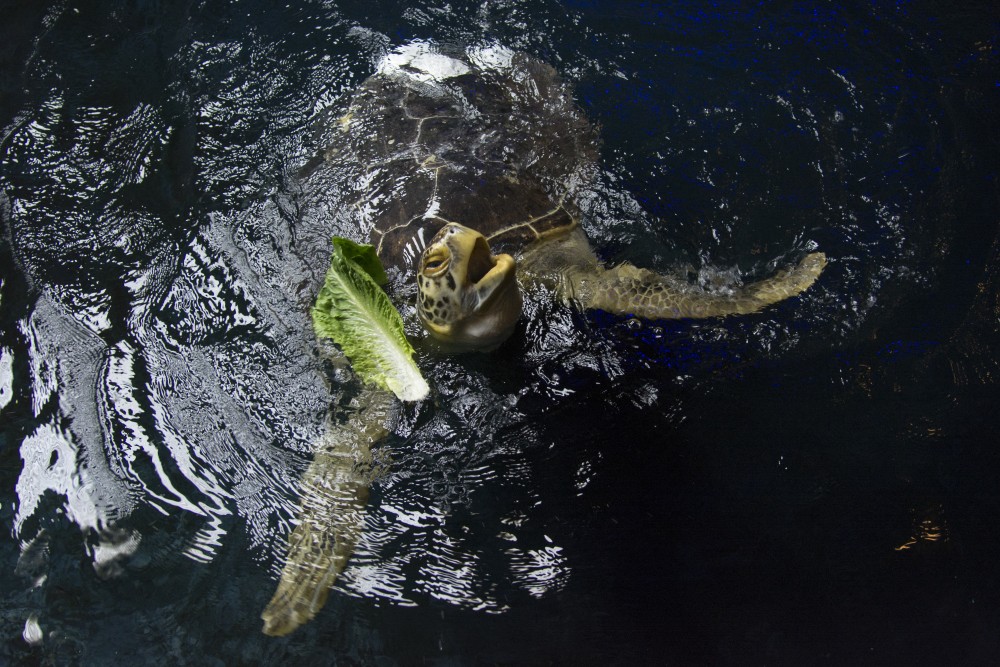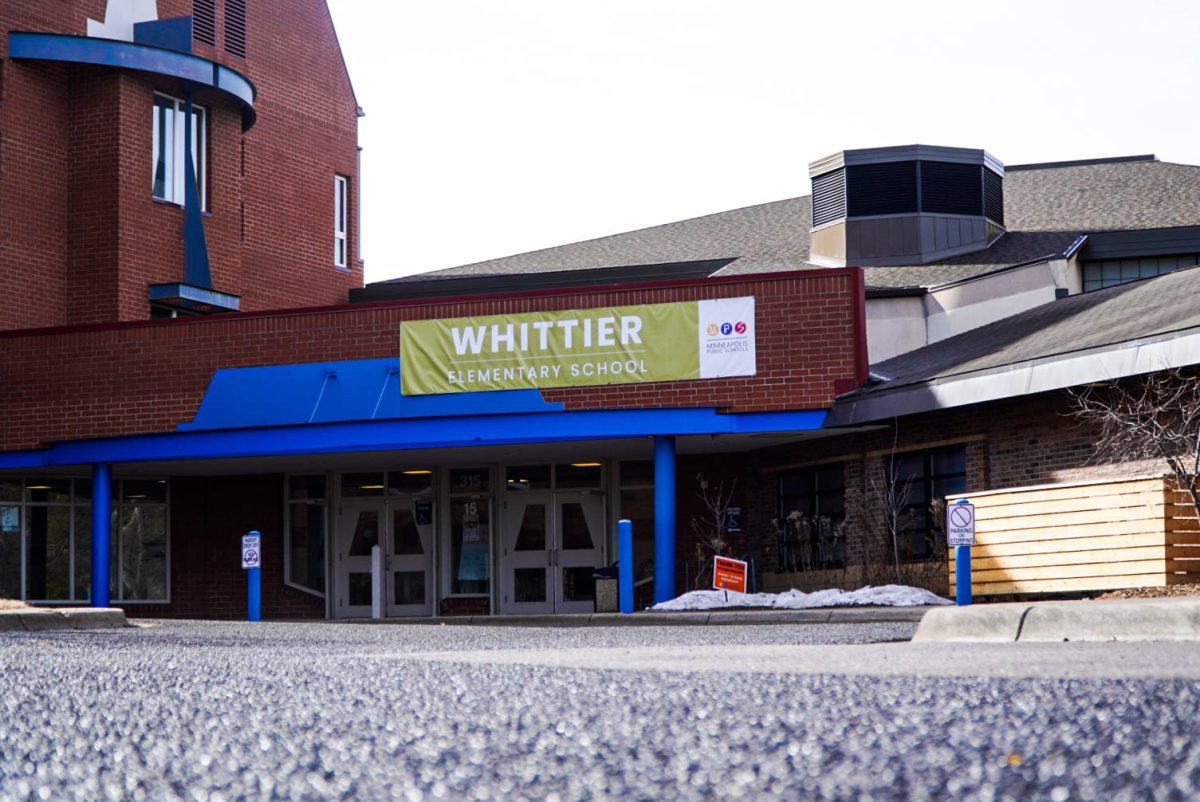Eight years ago, Seemore the sea turtle was swimming off the coast of Florida when she was stuck by a boat, cracking her shell.
The accident left the green sea turtle with the deceptively cute named affliction, “bubble butt syndrome.” After finding a home and a temporary treatment at the Mall of America’s Sea Life Aquarium, Seemore is set to receive a more permanent solution for her ailment from a team of University of Minnesota students.
“Bubble butt syndrome … is basically gas that’s trapped in the tissue and underneath the shell and it messes up the buoyancy,” said Traner Knott, aquarist who specializes in sea turtles at Sea Life.
For a solution, Sea Life reached out to the University for help.
A team of seven students met July 3 to discuss design concepts for a prosthesis to solve Seemore’s syndrome.
Bubble butt syndrome causes Seemore’s butt to float upward, making it difficult for her to dive underwater, Knott said.
For a short-term fix, Sea Life glued lead weights to her shell to counteract the buoyancy issues, but it is unfeasible for the long term.
“Sometimes the weights get knocked off, sometimes they just fall off, sometimes she gets irritated with them and rubs them off,” Knott said.
In June, the University’s Veterinary Hospital did a CT scan on Seemore to start developing the solution — a prosthetic attachment to hold the weights more effectively.
Davis Fay, team lead and manager for the University’s Institute for Engineering in Medicine’s 3D Printing Core, a group that specializes in using 3D printing in medical applications, said he has worked on human applications before but never other animals.
The team had to learn sea turtle anatomy to render a 3D digital model of the shell. The CT scan allowed Fay and Ryan Kruchten, a biomedical engineering sophomore, to make their model, which will aid in coordinating the design of Seemore’s prosthesis.
“It’s a fascinating engineering challenge,” said Fay, a graduate student.
There are several challenges that arise with designing the prosthesis, he said.
Everything must be considered — from the material, which needs to be able withstand a salt water and an animal-filled environment, to the functionality of the prosthesis, Fay said.
“Seemore wedges herself between rocks to sleep, which is a nightmare if you’re a designer,” Fay said.
Dang Nguyen, a member of the design team and information technology sophomore, is considering how different designs could catch on objects in the tank.
The prosthesis must let water circulate around it and the team has already scrapped one design that would have harmed areas with sensitive tissue, Fay said.
The work is difficult, but the team welcomes challenge.
“This is exactly what I want to be doing with my life, and I didn’t think that would be possible after my first year of college,” Kruchten said.
The team will use 3D printing throughout the design process because it is a quick, cheap and easy way to make prototypes, Fay said.
He said they are still trying to decide how to design the final prosthesis, but they might use 3D printing for the final product as well.
“The thing that 3D printing really allows us to do is get us something that is fully customizable,” Fay said.
Fay said they hope to present designs to Sea Life in August.
Correction: A previous version of this story had a photo caption that misstated what happened to Seemore’s shell. Her shell was damaged, and the University team is building an attachment for it.







